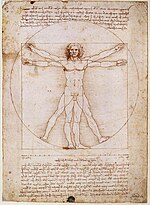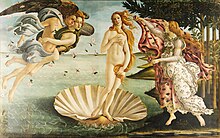 Italian history can be said to have started in the 20th century BC, when earliest accounts record the presence of Italic tribes in present-day central Italy. Linguistically, they were divided into Oscans, Umbrians and Latins. Later the Latin culture became dominant, asRome emerged as a powerful city-state around 350 BC. Other pre-Roman civilizations include Magna Graecia (or Greater Greece), when Greeks began settling in Southern Italy in the 8th century BC and lasted until the 3rd century BC and also the Etruscan civilization, which flourished between 900 and 150 BC in the central section of the peninsula.
Italian history can be said to have started in the 20th century BC, when earliest accounts record the presence of Italic tribes in present-day central Italy. Linguistically, they were divided into Oscans, Umbrians and Latins. Later the Latin culture became dominant, asRome emerged as a powerful city-state around 350 BC. Other pre-Roman civilizations include Magna Graecia (or Greater Greece), when Greeks began settling in Southern Italy in the 8th century BC and lasted until the 3rd century BC and also the Etruscan civilization, which flourished between 900 and 150 BC in the central section of the peninsula.
The Roman Empire later dominated Western Europe and the MedMiddle Ages and the Renaissance. After the fall of Rome in AD 476, Italy remained fragmented in numerous city-states for much of the following millennium, finally falling under different foreign dominations. Parts of Italy were annexed to the Spanish, the Austrian and Napoleon I's empire, while the Holy See maintained control over Rome, before the Italian Peninsula was eventually liberated and unified in the late 19th century.
iterranean for many centuries, making immeasurable contributions to humanity. Some of these led to the development of Western philosophy, science and art, that remained central during the
The new Kingdom of Italy, established in 1861, quickly modernized and built a largecolonial empire, colonizing parts of Africa, and countries along the Mediterranean. However, many regions of the young nation (notably, the South) remained rural and poor, originating the Italian diaspora. Italy wins the World War I against its historical enemies, the Austrian Empire. Soon afterwards, however, the liberal state collapsed to social unrest: the Fascists, led by Benito Mussolini, took over and set up an authoritarian dictatorship. Italy joined the Axis powers in World War II, falling into a bloody Civil War after a monarchist coup ousted Mussolini in 1943, surrendering to the Allies in 1943, so eventually winning the war against Fascists and Nazi Germany in 1945.
Renaissance[edit]
Main article: Italian Renaissance
Italy was a main center of the Renaissance, and is especially important for its arts, architecture, literature, science, historiography, political theory, and its influence on all of Europe.[45][46]
By the late Middle Ages, central and southern Italy, once the heartland of the Roman Empire, was far poorer than the north. Rome was a city largely in ruins, and the Papal States were a loosely administered region with little law and order. Partly because of this, the Papacy had relocated to Avignon in France. Naples, Sicily, and Sardinia had for some time been under foreign domination. The Italian trade routes that covered the Mediterranean and beyond were major conduits of culture and knowledge. The city-states of Italy expanded greatly during this period and grew in power to become de facto fully independent of the Holy Roman Empire.
The Black Death in 1348 inflicted a terrible blow to Italy, killing perhaps one third of the population.[49] The recovery from the demographic and economic disaster led to a resurgence of cities, trade and economy which greatly stimulated the successive phase of the Humanism and Renaissance (15th–16th centuries) when Italy again returned to be the center of Western civilization, strongly influencing the other European countries with Courts likeEste in Ferrara and De Medici in Florence.
The Renaissance was so called because it was a "rebirth" not only of economy and urbanization, but also of arts and science. It has been argued that this cultural rebirth was fuelled by massive rediscoveries of ancient texts that had been forgotten for centuries by Western civilization, hidden inmonastic libraries or in the Islamic world, as well as the translations of Greekand Arabic texts into Latin. The migration west into Italy of intellectuals fleeing the crumbling Eastern Roman Empire at this time also played a significant part.
The Italian Renaissance began in Tuscany, centered in the city of Florence. It then spread south, having an especially significant impact on Rome, which was largely rebuilt by the Renaissance popes. The Italian Renaissance peaked in the late 15th century as foreign invasions plunged the region into turmoil. The Renaissance ideals first spread from Florence to the neighbouring states of Tuscany such as Siena and Lucca. Tuscan architecture and painting soon became a model for all the city-states of northern and central Italy, as the Tuscan variety of Italian language came to predominate throughout the region, especially in literature.
Literature, philosophy and science
Accounts of Renaissance literature usually begin with Petrarch (best known for the elegantly polished vernacular sonnet sequence of theCanzoniere and for the craze for book collecting that he initiated) and his friend and contemporary Boccaccio (author of the Decameron). Famous vernacular poets of the 15th century include the renaissance epic authors Luigi Pulci (Morgante), Matteo Maria Boiardo (Orlando Innamorato), and Ludovico Ariosto (Orlando Furioso).
Renaissance scholars such as Niccolò de' Niccoli and Poggio Bracciolini scoured the libraries in search of works by such classical authors as Plato, Cicero and Vitruvius. The works of ancient Greek and Hellenisticwriters (such as Plato, Aristotle, Euclid, and Ptolemy) and Muslim scientists were imported into the Christian world, providing new intellectual material for European scholars. 15th century writers such as the poetPoliziano and the Platonist philosopher Marsilio Ficino made extensive translations from both Latin and Greek. Other Greek scholars of the period were two monks from the monastery of Seminara in Calabria. They were Barlaam of Seminara and his disciple Leonzio Pilato of Seminara. Barlaam was a master in Greek and was the initial teacher to Petrarch and Giovanni Boccaccio of the language. Leonzio Pilato made an almost word for word translation of Homer's works into Latin for Giovanni Boccaccio.[50][51][52]
In the early 16th century, Baldassare Castiglione with the Book of the Courtier laid out his vision of the ideal gentleman and lady, while Niccolò Machiavelli in The Prince, laid down the foundation of modern philosophy, especially modern political philosophy, in which the effective truth is taken to be more important than any abstract ideal. It was also in direct conflict with the dominant Catholic and scholastic doctrines of the time concerning how to consider politics and ethics.
Architecture, sculpture and painting
Italian Renaissance painting exercised a dominant influence on subsequent European painting (see Western painting) for centuries afterwards, with artists such as Giotto di Bondone, Masaccio, Piero della Francesca,Domenico Ghirlandaio, Perugino, Michelangelo, Raphael, Botticelli, Leonardo da Vinci, and Titian.
The same is true for architecture, as practiced by Brunelleschi, Leone Alberti, Andrea Palladio, andBramante. Their works include Florence Cathedral, St. Peter's Basilica in Rome, and the Tempio Malatestiano in Rimini. Finally, the Aldine Press, founded by the printer Aldo Manuzio, active in Venice, developed Italic type and the small, relatively portable and inexpensive printed book that could be carried in one's pocket, as well as being the first to publish editions of books in ancient Greek.
Yet cultural contributions notwithstanding, some present-day historians also see the era as one of the beginning of economic regression for Italy (due to the opening up of the Atlantic trade routes and repeated foreign invasions) and of little progress in experimental science, which made its great leaps forward among Protestant culture in the 17th century.
In 1946, as a result of a Constitutional Referendum, the monarchy was abolished.[2] The new republic was proclaimed on 2 June 1946. In the 1950s and 1960s, Italy saw a period of rapid modernization and sustained economic growth, the so-called Italian economic miracle. The country, coming back to international politics among Western democratic powers, joined the European Economic Community (which has later constituted theEuropean Union), the United Nations, NATO, the G7 and the Organisation for Economic Co-operation and Development. Italy is currently ranked as a major regional power.





